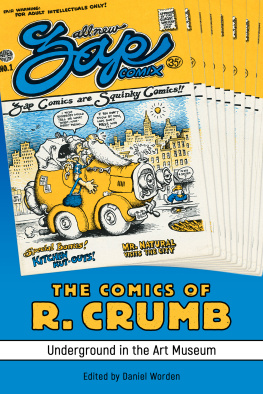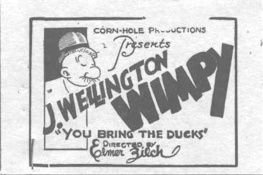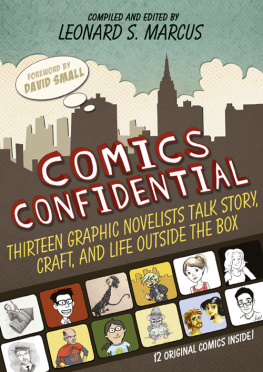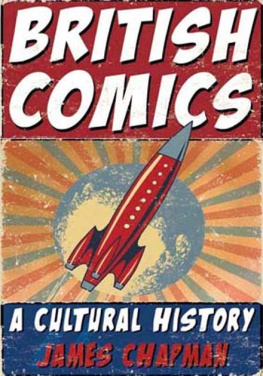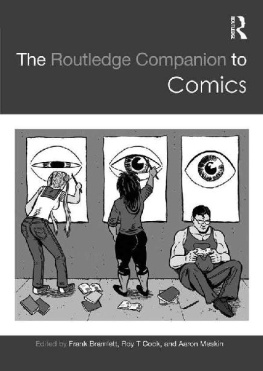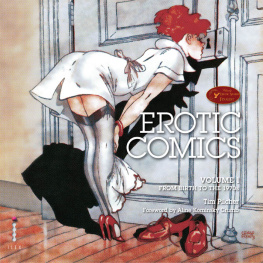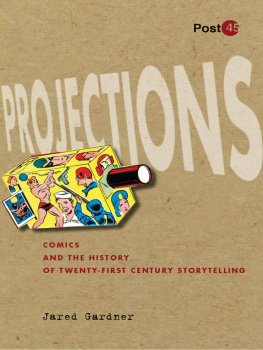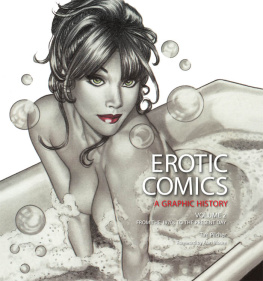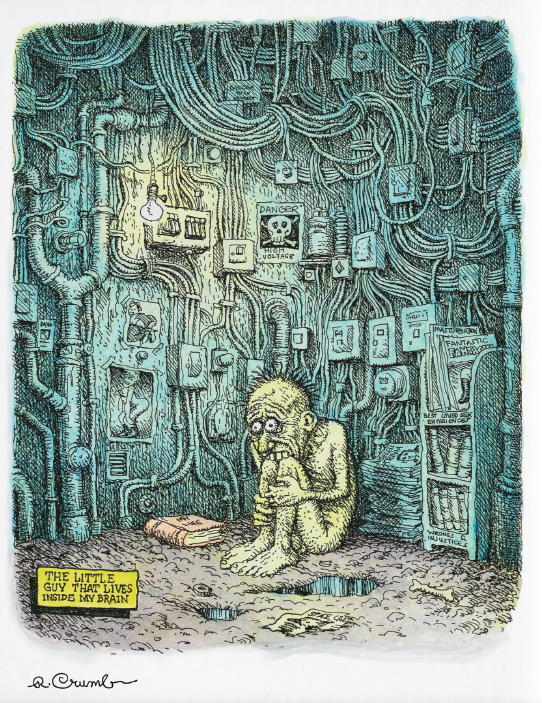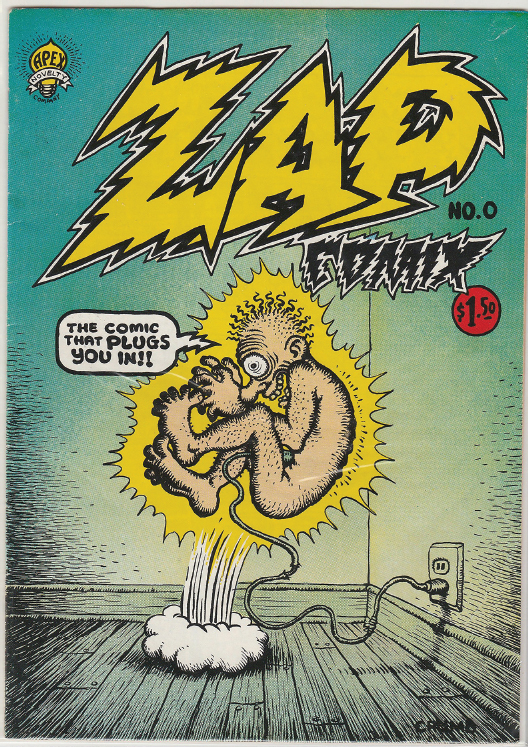Contents
Page List
Guide
THE COMICS OF R. CRUMB
David Ball, Series Editor
THE COMICS OF
R. CRUMB
Underground in the Art Museum
Edited by Daniel Worden
University Press of Mississippi / Jackson
The University Press of Mississippi is the scholarly publishing agency of the Mississippi Institutions of Higher Learning: Alcorn State University, Delta State University, Jackson State University, Mississippi State University, Mississippi University for Women, Mississippi Valley State University, University of Mississippi, and University of Southern Mississippi.
www.upress.state.ms.us
Designed by Peter D. Halverson
The University Press of Mississippi is a member of the Association of University Presses.
Copyright 2021 by University Press of Mississippi
All rights reserved
Manufactured in the United States of America
First printing 2021
Library of Congress Control Number: 2021934625
Hardback ISBN 978-1-4968-3375-4
Trade paperback ISBN 978-1-4968-3376-1
Epub single ISBN 978-1-4968-3377-8
Epub institutional ISBN 978-1-4968-3378-5
PDF single ISBN 978-1-4968-3379-2
PDF institutional ISBN 978-1-4968-3380-8
British Library Cataloging-in-Publication Data available
CONTENTS
JASON S. POLLEY
2. Crumb Agonistes
The Passion of a Disenchanted Utopian Scatologist
PAUL SHEEHAN
DANIEL WORDEN
4. How Many Trees Had to Be Cut Down for This Essay?
Crumb as Ironic Eco-Elegist
JOS ALANIZ
STILIANA MILKOVA AND LILIANA MILKOVA
6. Where the Action Is
Crumb, Semiotics, Lcriture Fminine, and Taste
JULIAN LAWRENCE
7. And Abram Listened to the Voice of Sarai
R. Crumbs Pro-Feminist Interpretation of Sarah in the Bible
ZANNE DOMONEY-LYTTLE
IAN BLECHSCHMIDT
9. The Tortured Artist
R. Crumbs Visual Adaptation of Kafkas Iconic Ugliness
LYNN MARIE KUTCH
DAVID HUXLEY
KIM A. MUNSON
12. Robert Crumb and yvind Fahlstrm
The Marriage of Social Satire and Ideological Critique
CLARENCE BURTON SHEFFIELD JR.
PAUL FISHER DAVIES
ACKNOWLEDGMENTS
M any thanks to the contributors to this volume, all of whom brought unique perspectives to one of the landmark artists in comics history. Special thanks, as well, to Robert Crumb, for his support of this book.
I owe thanks to the School of Individualized Study, the Department of English, and the College of Liberal Arts at the Rochester Institute of Technology for supporting my work on this book. I also wish to thank the David Zwirner Gallery for their assistance, and Lora Fountain for her astute help. David Ball, Katie Keene, and Vijay Shah were invaluably supportive editors at the Critical Approaches to Comics Artist series and the University Press of Mississippi. Frederick Luis Aldama, Frances Andreu, Bart Beaty, Alex Beringer, Caitlin Cass, Dave Chisholm, Hillary Chute, Stephen Cooper, Clayton Cowles, Jackie Davis, Shawn Dunwoody, Tom Galambos, Stephen Galbraith, Jared Gardner, Nicholas Gurewitch, Charles Hatfield, Susan Kirtley, Adam Kubert, Martha Kuhlman, Susan Liberator, Don Lombardo, Caitlin McGurk, Nancy Pedri, Andrew Perry, Ed Piskor, John Porcellino, Barbara Postema, Jenny Robb, Joe Sacco, Tate Shaw, R. Sikoryak, Nancy Silberkleit, Nick Sousanis, Marc Tomko, Brittany Tullis, Carol Tyler, Noah Van Sciver, Rebekah Walker, Franzie Weldgen, Qiana Whitted, Kriota Willberg, and Caitlin Yarsky have all helped me to think about Crumb and comics more generally, and I thank them for being a part of my comics studies world. Students in my art comics courses at RIT have provided invaluable thoughts and reflections on Crumb and his legacy for contemporary artists and fans, and my work on this book has been informed by their insights.
Finally, and most importantly, thanks to Catherine Zuromskis and Clementine.
THE COMICS OF R. CRUMB
Fig. 0.1. R. Crumb, The Little Guy That Lives Inside My Brain, Copyright Robert Crumb, 1986. All rights reserved.
INTRODUCTION
R. Crumb in Comics History
R obert Crumb makes comics about himself. How Crumb appears in his comics has varied over his long career. In his earliest comics, many written and drawn collaboratively with his brother Charles Crumb, Crumbs childhood desires and preoccupations are filtered through the cartoon styles of Carl Barks and Walt Kelly. In his celebrated underground comics of the 1960s, those funny animals and cartoony icons morph into characters like Fritz the Cat, a neer-do-well, sexually rapacious feline, and Mr. Natural, a sage looking for his next paycheck, both of whom prey upon the drug and hippie countercultures of the late 1960s for their own benefit. As he notes in The R. Crumb Coffee Table Art Book: [M]y approach to comics has always been somewhat spontaneous. Im usually only a few panels aheadI dont like to plan it out too much.I use the old-time comic stereotypes to reveal myself to myself. Im both Mr. Natural and Flakey Foont. Im also Mr. Snoid (Crumb and Poplaski 1998, 247). Through the conventions of classic funny animal and humor comics, including the racism and sexism endemic to those forms histories, Crumb explores an inner world on the comics page.). The unconscious energy that Crumb channels into his somewhat spontaneous comics plug you in, as a reader and a viewer, to the artist and, by extension, the history of comics and cartooning through which he channels his desires and thoughts.
Characters like Fritz the Cat and Mr. Natural express the levels of attachment and critical detachment from the counterculture that have defined Crumbs role as an artist closely identified with San Franciscos Haight-Ashbury in the 1960s, and as someone who has openly expressed his alienation from the music and mysticism rampant during that period. In the 1970s and beyond, Crumb would increasingly draw himself as a centerpiece in his comics, and sometimes fantastical, sometimes mundane stories of daily life would structure his collaborative work with his wife, Aline Kominsky-Crumb, and American Splendor creator Harvey Pekar. Even when Crumb takes on someone elses story, as in his later works Kafka and The Book of Genesis, shades of Crumbs themes inevitably appear, as the sexual anxieties of Kafka or the patriarchal cruelty of the biblical world resonate with his more overtly autobiographical work.
Fig. 0.2. R. Crumb, Zap Comix #0 cover, Copyright Robert Crumb, 1967. All right reserved.
Perhaps more than with any other comics artist, it is difficult, maybe even impossible, to separate Crumbs persona and biography from his work. While many modern and postmodern schools of art and literary criticism have built themselves around the idea of examining the artwork itself rather than the conditions of its production or the idiosyncrasies of its creatorfrom William K. Wimsatt and Monroe C. Beardsleys Intentional Fallacy and Roland Barthess Death of the Author to Michael Frieds distinction between Absorption and Theatricalitythe exclusion of context, production, or personality is difficult to do with an artist like Crumb, whose persona and personal history are so well documented in his works and in other media. Crumbs work evokes the artist not just as a craftsman or creator of meaning but as a person who renders in crosshatched detail anxieties, desires, pleasures, and politics.

